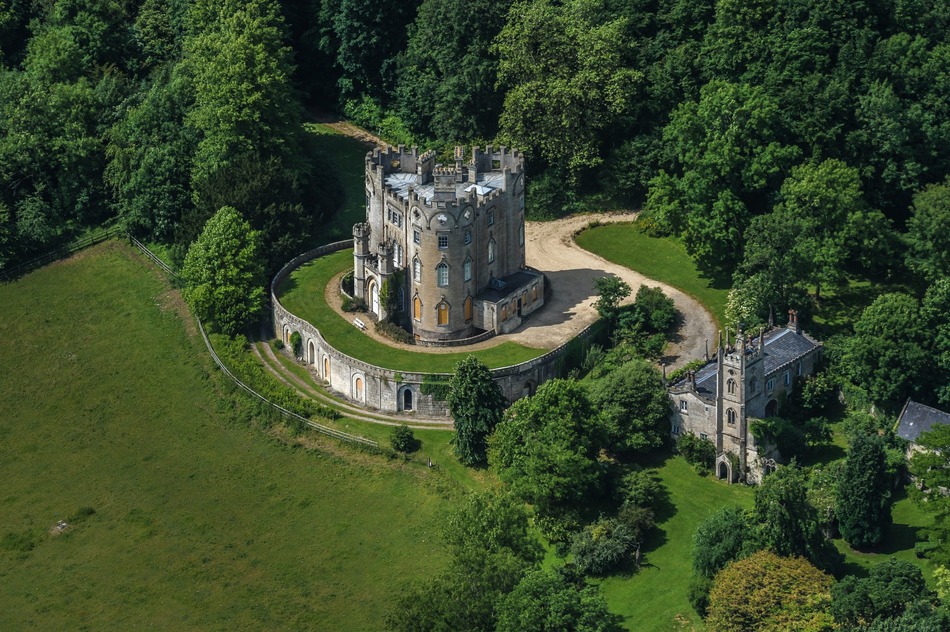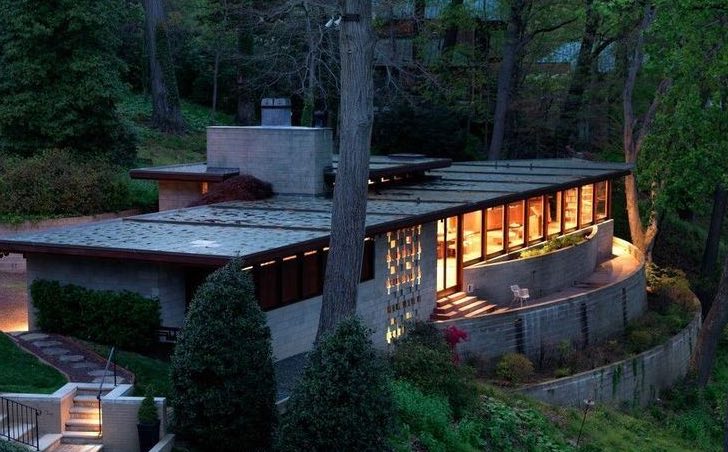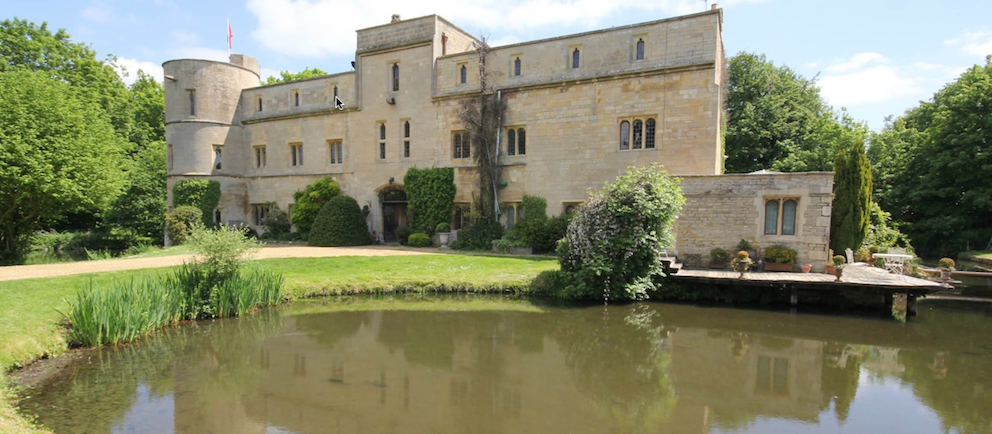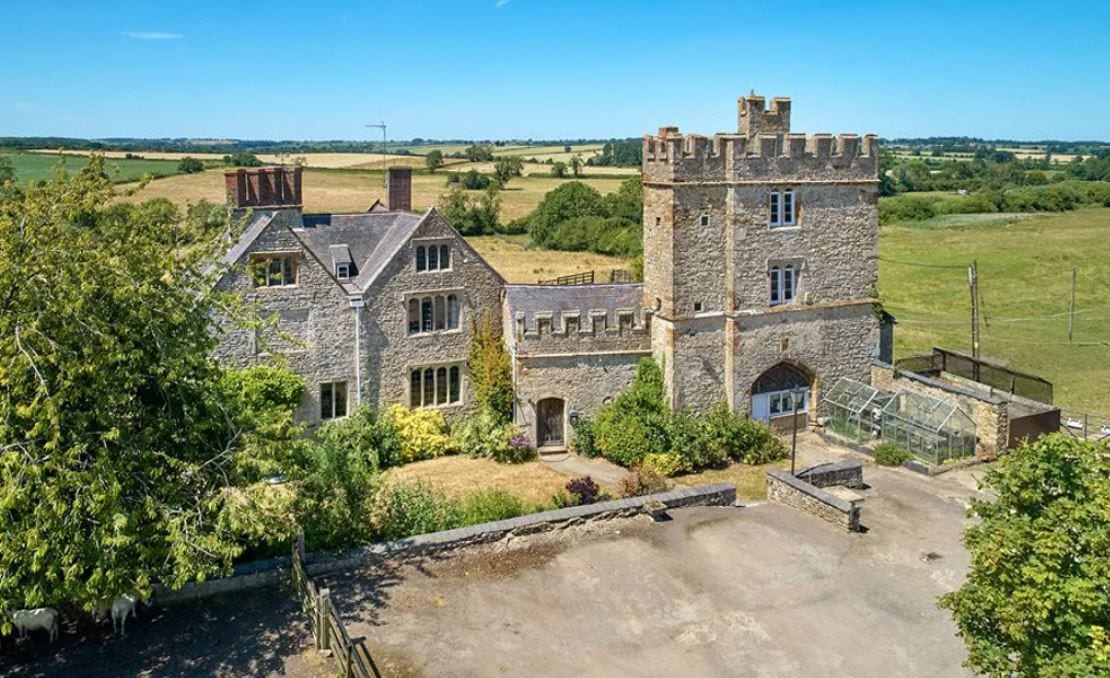Gillette Castle is a stone mansion built by the actor, playwright, and stage director William Gillette in 1919. The property sits right next to the Connecticut River, between the towns of East Haddam and Lyme.
While the property is now known as ‘Gillette Castle,’ it was never called that by William Gillette himself; he called it the ‘Seven Sisters Estate’ and insisted it wasn’t a castle.
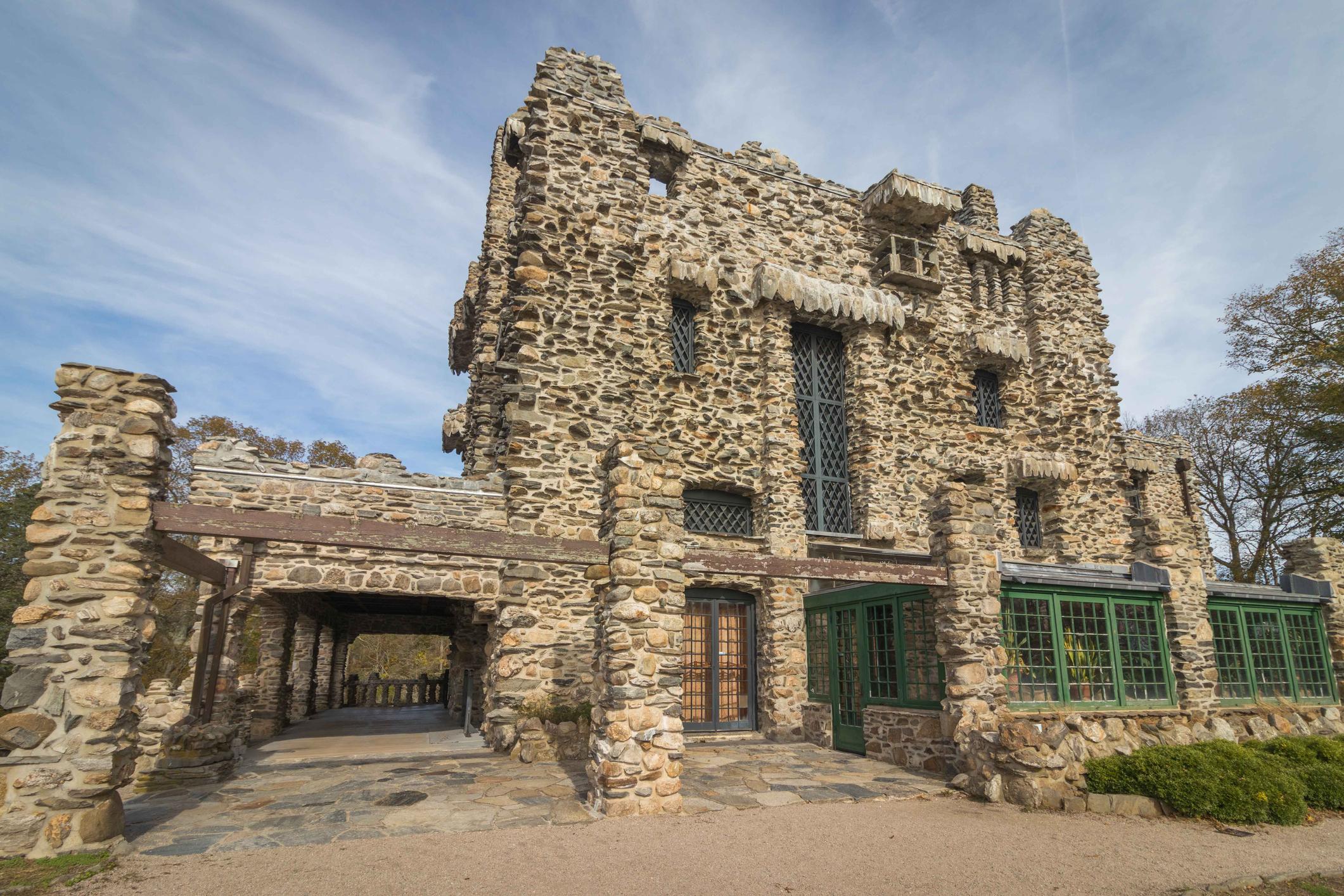
William Gillette
William Gillette was born in Hartford, Connecticut, in 1853; his father, Francis, was a United States Senator, while his mother Elisabeth was a descendant of the Reverend Thomas Hooker, the English Puritan who founded the town of Hartford in the 1630s.
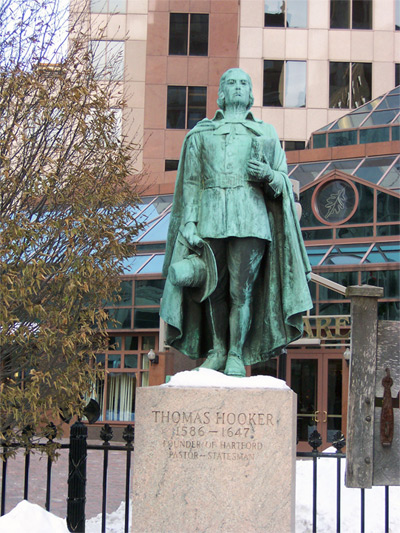
A monument to Thomas Hooker.
William was one of six children; his eldest brother, Frank, died when William was six years old from tuberculosis, while another brother, Robert, died in 1865 when William was twelve. Robert was in the Navy and killed after a powder magazine exploded at Fort Fisher. He also had a sister, Mary, die as a small child, leaving just three of the six children.
In 1873, at the age of twenty, William left Hartford to begin an apprenticeship as an actor, working in New Orleans and Boston, New York, and the Midwest. All of this work as an actor was done without pay, living off an allowance from his father, Francis.
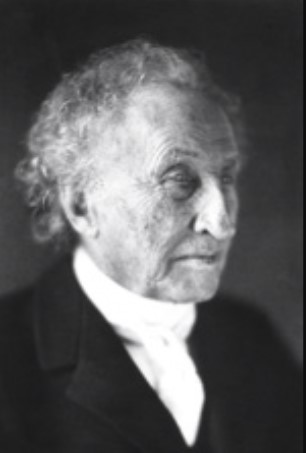
US Senator Francis Gillette
When Francis became ill in 1878, William left the stage for more than a year to help look after his father. After his death, Williams’s share of the inheritance allowed him to continue acting up until 1881, when he got a job as a playwright, director, and actor in Cincinnati for $50 per week, the equivalent of about $1500 today.
In 1882, William married Helen Nichols, an actress from Detroit. In 1888, she died from a ruptured appendix at the age of twenty-eight. William never remarried or had children, remaining single for the rest of his life.
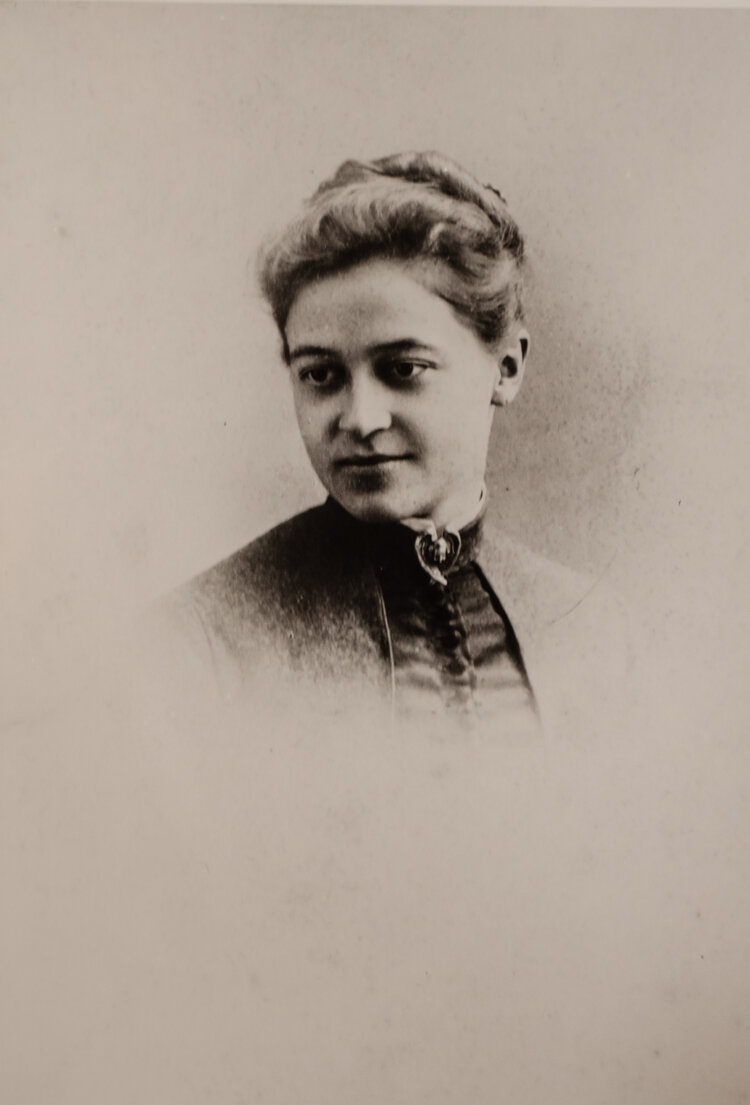
Helen Nichols, wife of William Gillette.
While much of Williams’s work is now lost, he is best remembered for playing Sherlock Holmes. With the permission of Sir Arthur Conan Doyle, the creator of the fictional Sherlock Holmes character, William wrote the first authorized play adaptations of his novels.
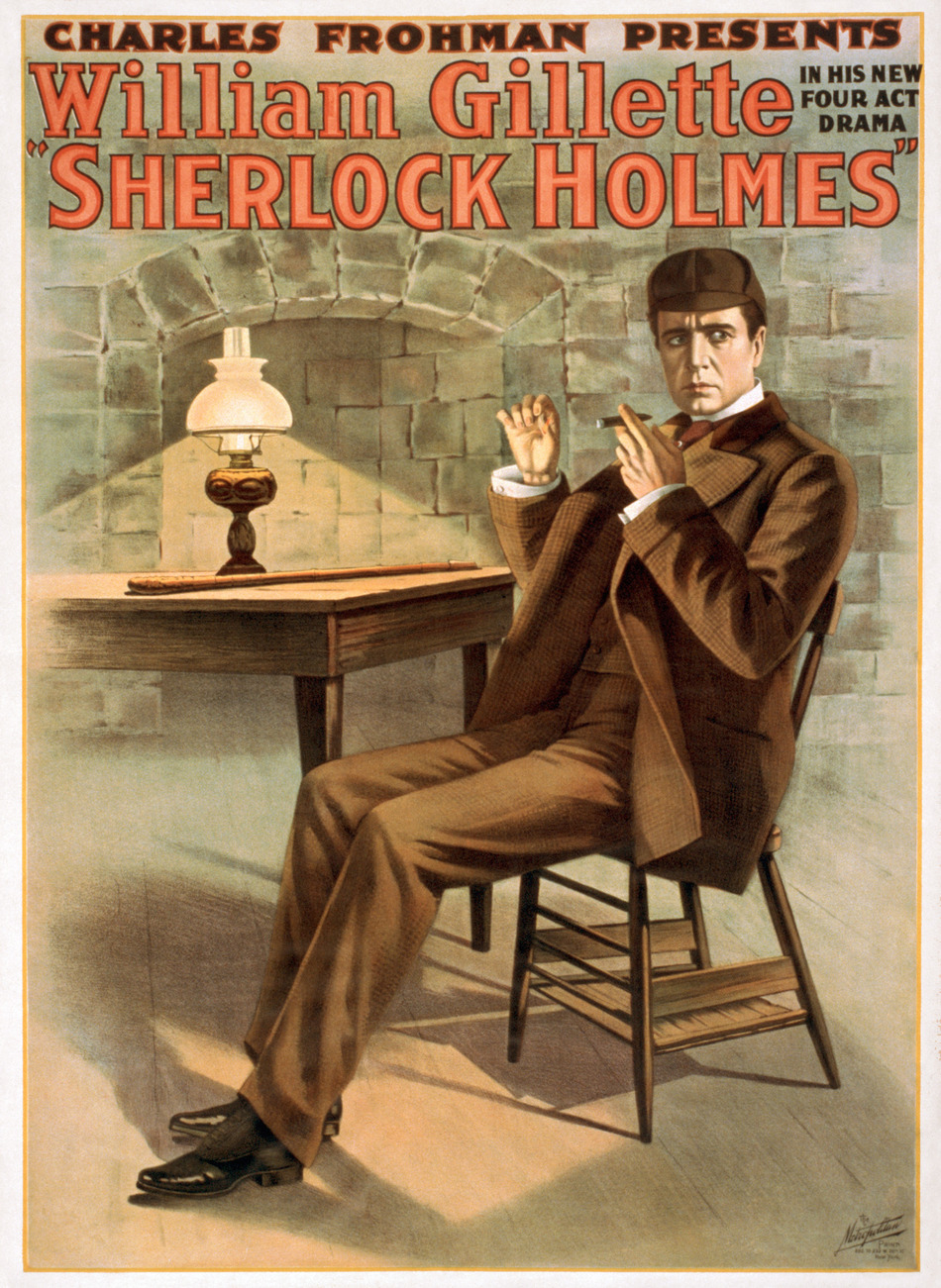
Beginning in 1899, Gillette went on to star as Sherlock Holmes more than 1300 times over a 33-year period. Gillette helped both originate and popularise many of the common features associated with the character, including the curved pipe, deerstalker cap, and the magnifying glass.
In 1916, Gillette starred in his first cinema adaptation of Sherlock Holmes, albeit not his firm film about Holmes. The seven-reel silent film, like much of Gillette’s work, was thought to have been lost, that was until 2014 when a copy was found at Cinémathèque Française, a French organisation that holds one of the world’s largest archives of films.
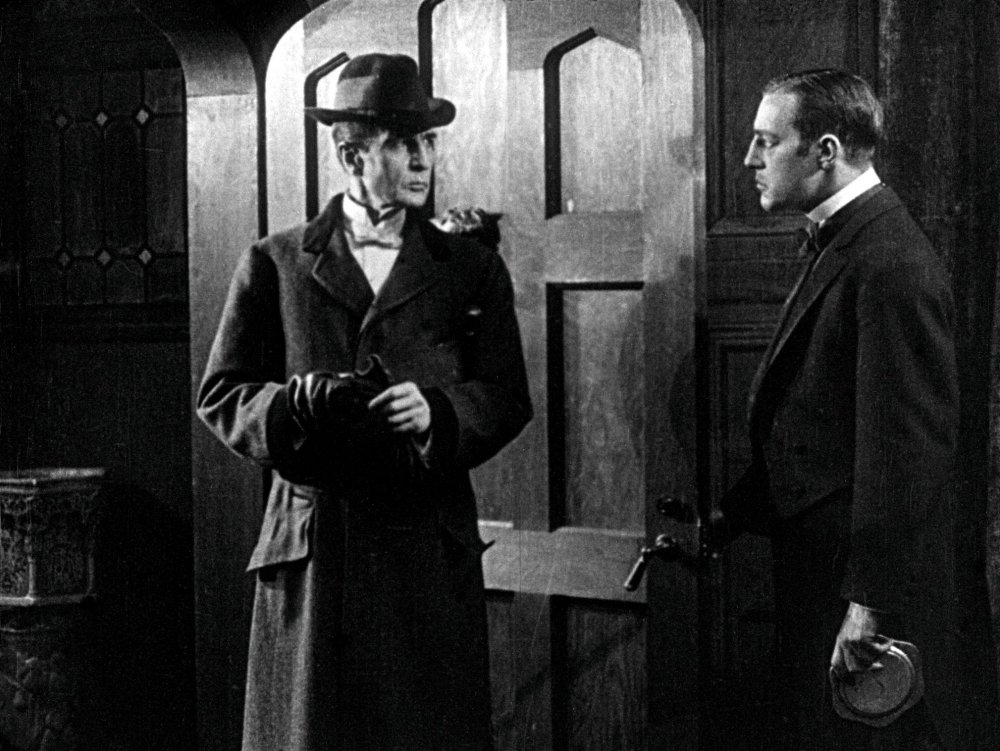
A scene from the Sherlock Homes film that was thought to have been lost forever.
In 1914, in the middle of William Gillette’s time playing Sherlock Holmes, he began to have Gillette Castle built (Seven Sisters Estate). The plan was to build the property and retire there; while he did move into the castle, he never retired.
Gillette was last on stage in 1936, at the age of 82. He died a year later and was buried next to his wife Helen, who had died 49 years earlier.
The History Of Gillette Castle
Gillette Castle (or the Seven Sisters Estate as William Gillette called it) began construction in 1914 and finished in 1919. However, William Gillette then decided to expand the property, which took place between 1923 and 1926. The finished article was a 14,000-square-foot mansion with 24 rooms sat on 187 acres of land.

Gillette designed the home himself and overlooked every phase of the construction, which was carried out by the Porteus-Walker Company, a company based in Hartford, Connecticut, founded by his childhood friend, Robert Porteus.
Using local Connecticut field stone and supported by a steel framework, the entire five-year construction cost over $1 million at the time, about $17.5 million today.
Inside the property is where William Gillette’s creative genius was really on show. The mansion features a number of oddities that were personally designed by Gillette himself.
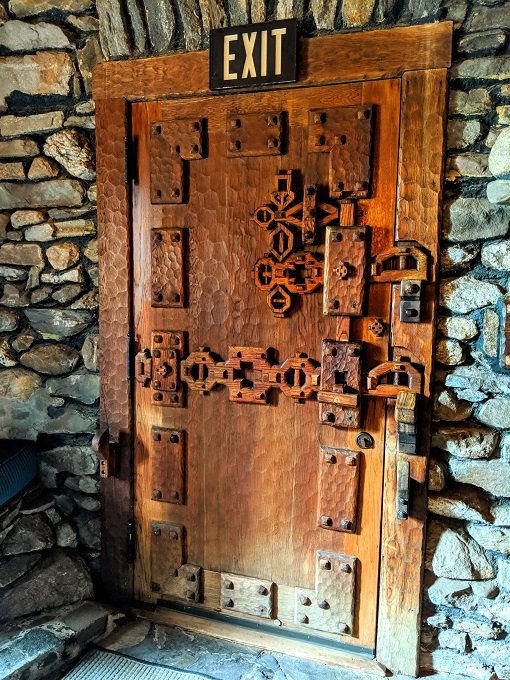
This includes 47 unique doors and locks, each door with an external Steampunk-style latch carved out of wood. Moveable tables on tracks, light switches made from carved wood, a hand-carved bar, a fire suppression system, and a number of secret doors and passageways, to name but a few.
As Gillette was widowed with no children, you may wonder why he needed such a big house! Gillette loved to have visitors, including some very famous people, Albert Einstein and Charlie Chaplin, to name but a few. He also happened to share the property with seventeen cats!
William Gillette’s Minature Railroad
In 1927, after Gillette Castle had been completed, William Gillette built a three-mile miniature railroad around his property. Gillette had always loved trains and had two quarter-scale engines, one steam and one electric, built for him.
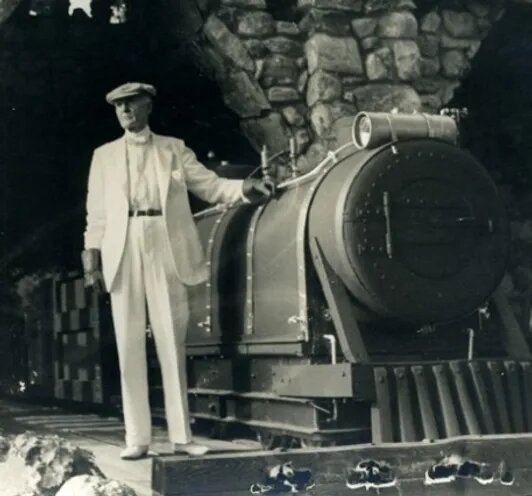
He also had several passenger cars built, as well as tunnels, bridges, and a turnaround. There was also a station called ‘Grand Central’ that offered incredible views over the Connecticut River.
Gillette Castle Today
After William Gillette died in 1937, the estate was left to his cousin and his brother-in-law. In 1943, they sold the property to the State of Connecticut, with help from the Connecticut Forest and Park Association, for $30,000.
Gillette Castle State Park opened in October 1944 as a museum and state park, which it continues to operate as today.
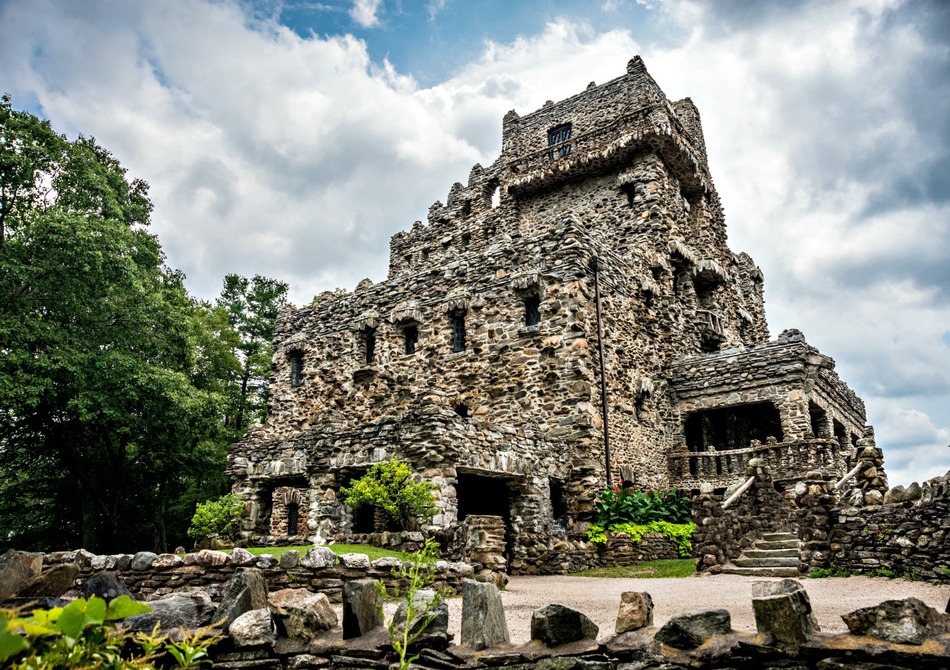
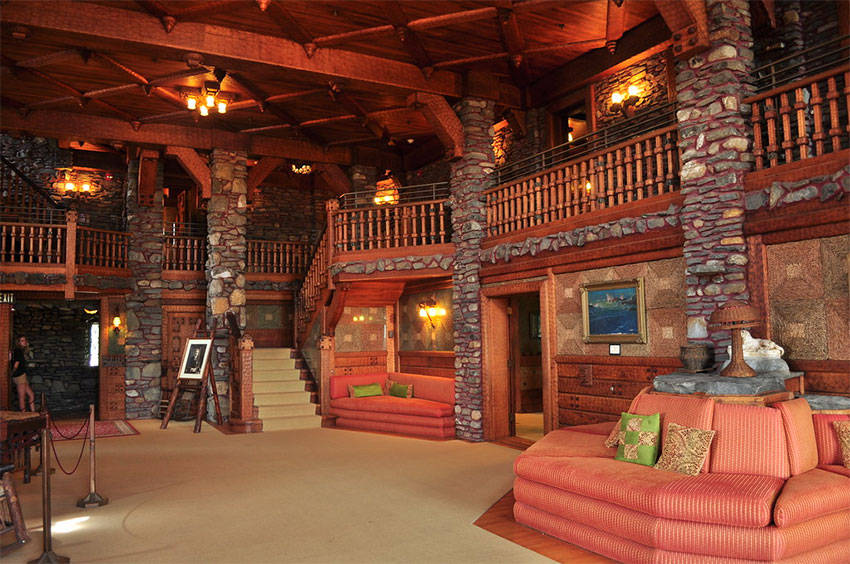

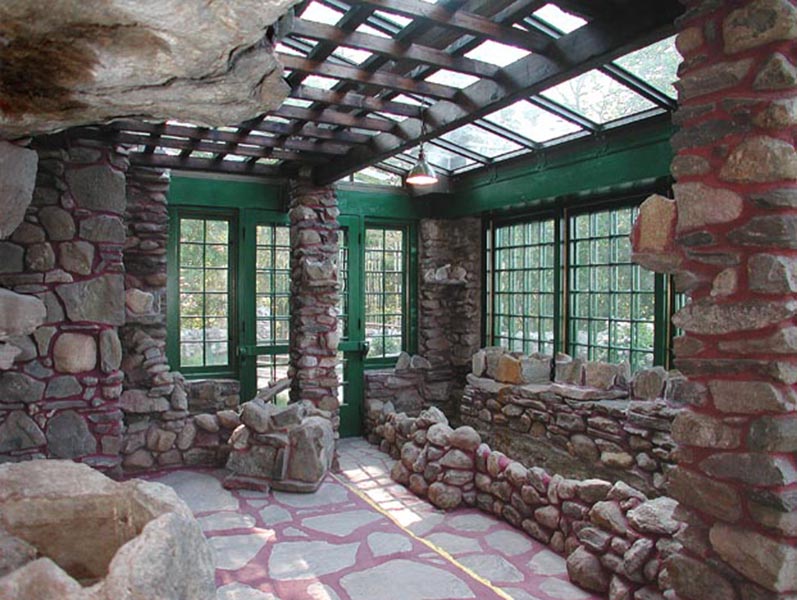
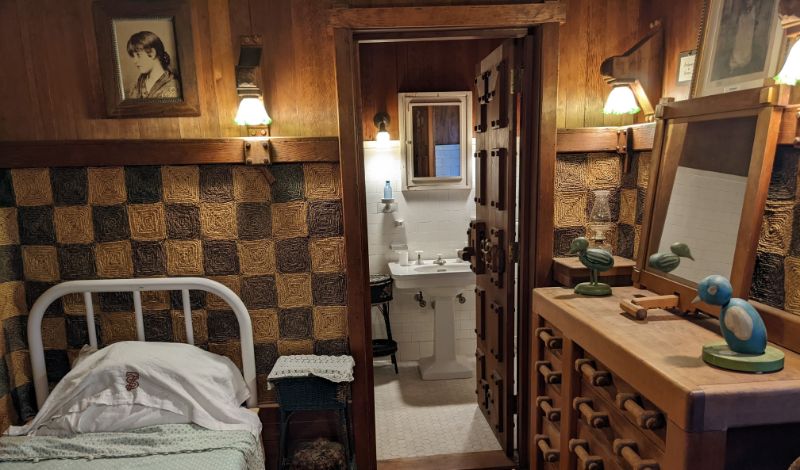
In 2019, the Connecticut State Bonding Commission approved $1.99 million in funding for Gillette Castle to rebuild a retaining wall and the deteriorating entrance. Work on Gillette Castle was completed in 2023.
If you like Gillette Castle, you should check out Bishop Castle, Mystery Castle, and Shea’s Castle. Three other American ‘castles’, all with incredible history.

